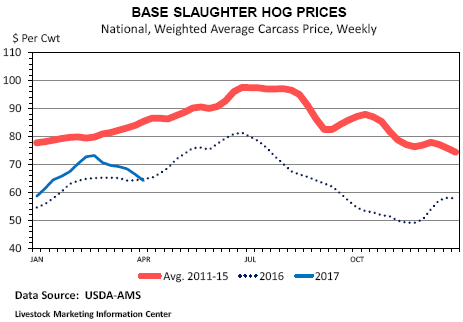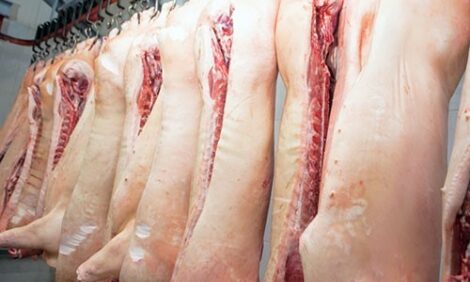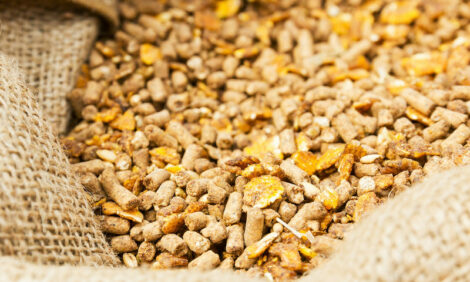



CME: Projections Place US Pork Net Exports Above Year-ago Levels in Q1
US - Yesterday we looked back at the US cattle sector for the first quarter of 2017. Today we turn to hogs. We will focus on year-over-year and quarter-on-quarter changes in supply and demand factors that influenced slaughter barrow and gilt prices, report Steiner Consulting Group, DLR Division, Inc.In the first quarter of this year, the national average negotiated base hog price was $67.79 per cwt. (carcass price), as reported by USDA’s Agricultural Marketing Service (Market News Division). That was up $5.64 per cwt. (9.1 per cent) from a year ago and a seasonal increase from 2016’s fourth quarter of $14.64 per cwt. (jumping-up 27.5 per cent). In recent weeks, due to relatively large supplies, hog prices have drifted lower; usually they are rather stable to slowly increasing.
Based on preliminary data for March, US commercial hog slaughter in 2017’s first quarter is projected to be record large at nearly 30.2 million head, a 3.1 per cent increase compared to a year ago. Average dressed weight was down slightly from 2016’s. Pork production was 3.0 per cent above a year earlier and record large for the quarter. In contrast, production was well below 2016’s fourth quarter. As a reminder, seasonally the largest hog slaughter and pork production months of the year are in the fourth quarter.

Using data compiled and reported by USDA’s National Agricultural Statistics Service, over the 10-year time period from 2006 through 2015, the average seasonal decline from the fourth quarter to the first quarter of the subsequent year in US commercial pork production was 4.7 per cent. The decline from the last quarter of 2015 compared to the first quarter in 2016 3.5 per cent. Most recently , the decline in first quarter of 2017 compared to 2016’s fourth quarter, also was 3.5 per cent. Those quarterly production declines provide the normal seasonal supply basis for prices to increase.
On a tonnage basis, projections put US pork net exports (exports minus imports) well above a year ago in the first quarter of 2017. Official data (compiled and published by USDA’s Foreign Agriculture Service) showed that compared to a year ago, in January and February of this year tonnage exported was up 18 per cent, while US imports declined by 14 per cent. In the first quarter of this year, the year-over-year change in net exports was clearly a price supporting factor.
Projected US per capita pork disappearance (retail weight basis) for January-March was below 2016’s; the Livestock Marketing Information Center (LMIC) projects it to be down 2.2 per cent year-over-year. Of course, that year-over-year drop was because of the change in net exports described above. That number reflects supply available in the domestic marketplace and US population growth. Per capita disappearance in the first quarter of 2015 was 12.2 pounds (retail weight equivalent) that was only 0.1 pound below 2017’s. And, again using the national average base negotiated price, dressed hogs averaged $68.55 in the first quarter of 2015, only $0.79 per cwt. above this year’s.
Currently, LMIC forecasts US commercial pork production in the second quarter of 2017 will be about 5 per cent above a year ago. In the second half of this calendar year, production is expected to rise 2 per cent to 4 per cent year-over-year. April-June hog prices may average below a year ago (down 1 per cent to 4 per cent). Even though pork production will likely be well above 2016’s in the second half of this year (up 2 per cent to 4 per cent year-over-year), hog prices could post modest year-over-year increases, most likely during the fourth quarter. If that happens, it will largely be the result of reduced packer margins compared to 2016’s very high levels because of new slaughter plants coming on-line and increasing competition for animals.








